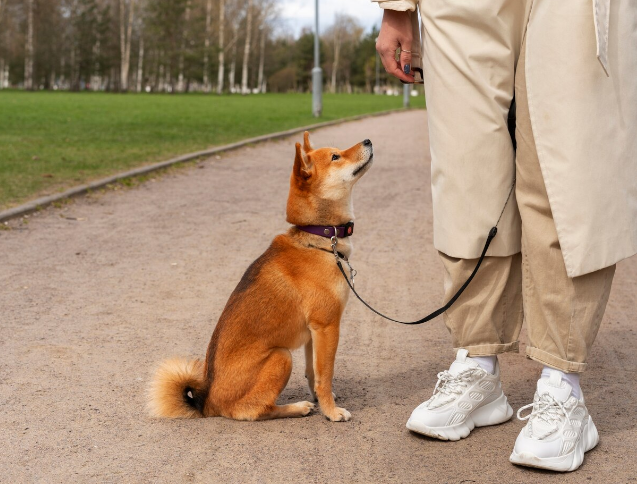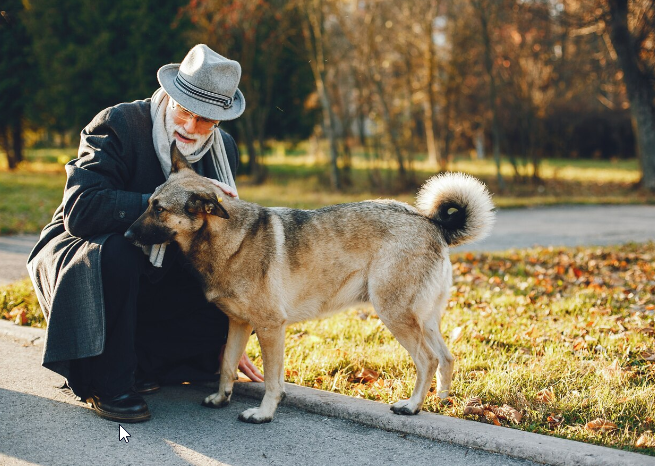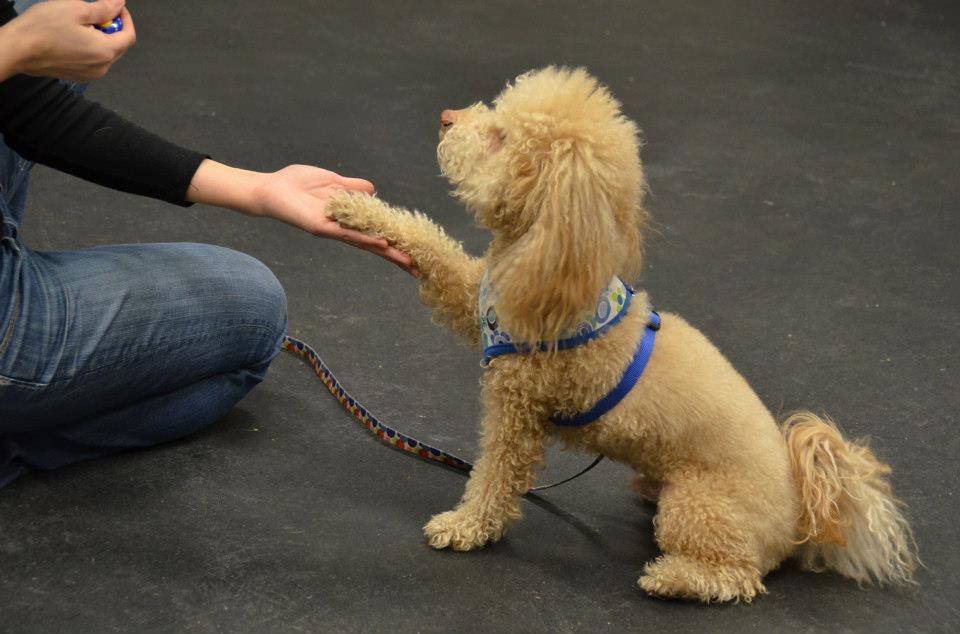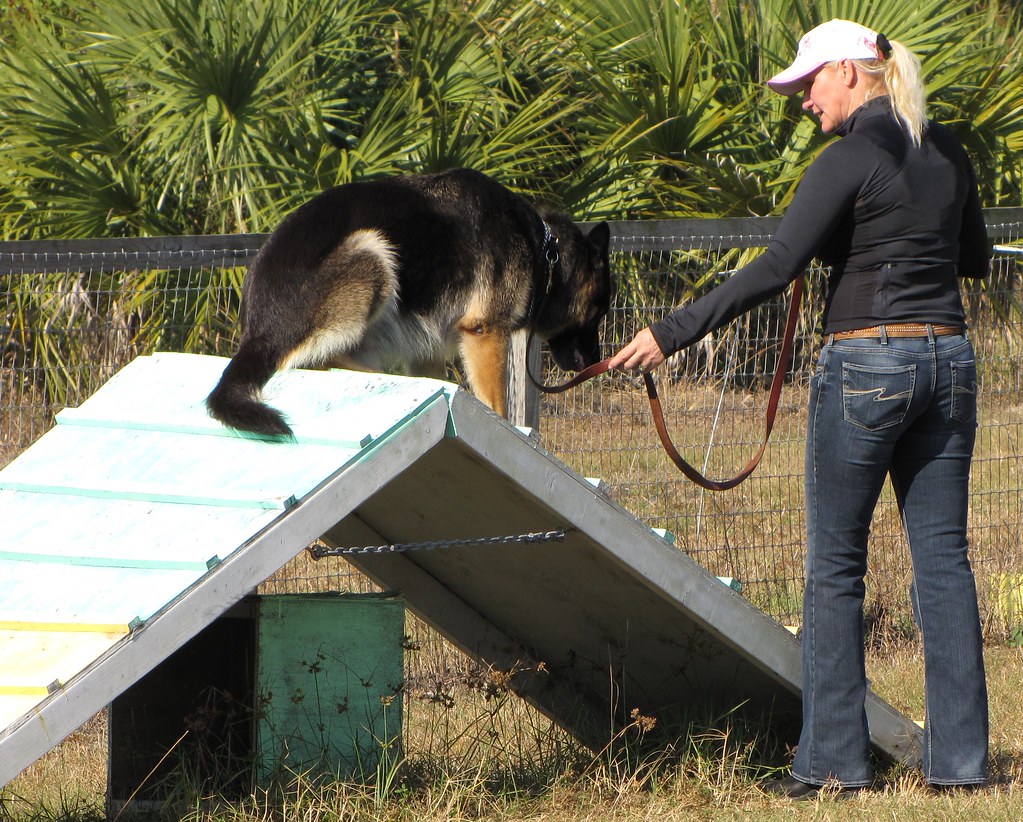
“It is important to start training your dog while they are still young” - You might have heard this many times. We also give this advice as the younger a dog is, the easier they can pick up new tasks and skills. This is of course quite normal and similar to humans, the younger a puppy is, the higher their learning capacity is. Puppy brains are more receptive to new experiences and training. Furthermore, they have not developed habits yet and are more adaptable.
While training a young dog is preferable, does it mean that you can not train an older paw companion? No, older age does not necessarily limit the possibility of successful training! Of course, there are factors to be considered, including the dog’s health and physical limitations, and the type of training. There might be some challenges on the way, so the more informed and prepared you are, the higher the chances for success become!
In today’s article, we will explore the process of training an older dog to be a service dog, and the challenges involved, and will give you advice on what strategies you can utilize to overcome them.
Possible Challenges
Bad Habits
If you have decided to embark on a training journey with an older dog, make sure to thoroughly evaluate their temperament and familiarize yourself with any behavioral issues and bad habits the dog might have developed.
While puppies do not have developed habits and are still learning about the world, this is not the case with older dogs. Unwanted behaviors like jumping, chewing, showing reactivity towards other animals and people, barking, pulling on a leash, etc., can become an integral part of a dog’s life and become bad habits if not addressed in a timely manner.
It is easier to teach a pup new behaviors than to correct the unwanted behaviors of an old dog. For example, if you adopt a rescue dog or a canine who was previously neglected, there is a high likelihood for bad habits to be present, mostly out of fear.
With patience, consistency, much love, and of course the right approach, you can turn your paw companion into a good service dog! Often, rescue dogs develop stronger bonds with their owners than purebred dogs purchased from a breeder.
Physical Limitations
The older a dog gets, the more limited their physical capabilities become. This is a normal part of the aging process that you should never overlook.
Your paw friend may deal with mobility issues, including arthritis, cognitive, and sensory impairments, or other health conditions related to the process of aging or any previous traumas or injuries. To make sure your dog is physically fit, you should bring them to a vet for a thorough examination. This will help them identify any potential underlying health conditions and address them on time.
Mental Limitations
Cognitive skills also weaken with age. The learning capacity of old dogs can be compared with the same of young pups.
Of course, let’s not forget that everything is individual, and there is always a difference from dog to dog. Your canine may still be in great mental shape!
Type of Training
Depending on the nature of the tasks you would like to train your dog to perform for you, their age may be a significant factor.
Psychiatric service/assistance dog training primarily focuses on tactile stimulation, such as deep pressure therapy, giving kisses, nose-nudging, pawing, and other non-physically demanding tasks. Some people successfully complete a Psychiatric Service Dog Course with canines that are not considered of a suitable age for training, for example, 8–9 years old.
However, other types of training such as pulling and dragging objects, opening/closing doors, pushing carts, standing up on two feet, etc., may be overwhelming for your older dog. If you are interested in training a dog as your mobility service animal, getting a new pup will be more suitable. If you get a young pup, though, make sure they have fully developed physically and have a robust bone structure before embarking on a mobility service dog training journey with them.
Learning Pace
It is essential to remain calm and very patient throughout the process, as the pace at which your canine learns, may not be the one you are hoping for.
Older dogs might need longer to learn new commands and behaviors compared to younger ones. Furthermore, they might also have a shorter attention span, making training sessions more challenging.
Respect your paw friend’s abilities and make sure to not overwhelm them.
Bond
If you are training an older dog who has previous owners to become your service animal, you might encounter bonding issues.
Unlike training a young puppy, which is often a blank slate, older dogs are likely to have already established bonds and trust with their previous owners. Having said that, it is essential to make your best effort to build a new bond with them and gain their trust.

Strategies On How to Train an Older Dog
Despite all these challenges, training an older dog to be a service animal is entirely possible with patience, dedication, and the right approach. There are some strategies that may help you and your paw friend along your training journey!
Assess Your Dog's Abilities and Temperament
Before embarking on a service dog training journey, it is crucial to assess your canine’s physical health, temperament, and existing skills.
Evaluate factors such as age, breed, weight, and any existing health conditions that may impact the training process. Address any health concerns or limitations that may affect the dog's ability to perform certain tasks or endure rigorous training sessions.
Assess your furry friend’s qualities such as attentiveness, sociability, confidence, and adaptability, which are essential for a successful service dog.
Furthermore, you should identify any behavioral issues that need to be addressed before or during the training process.
This assessment will help you tailor the training program and find the right approach to suit your dog’s needs and abilities.
Divide the Tasks Into Simple Steps
Older dogs may find it challenging to learn complex commands all at once.
To avoid confusion and overwhelming your dog, make sure to break down the training process into smaller, manageable steps and gradually increase the difficulty.
Breaking down the process into simple steps involves teaching the dog to perform complex tasks by initially rewarding any behaviors that near the desired ones. Over time, as your canine progresses, you can start rewarding them for more precise performances.
If your dog does not know any commands, it is crucial to start with basic obedience training such as “sit”, “wait”, recall (come when called), and build a solid foundation before transitioning to more advanced tasks.
Use Clear and Consistent Commands
This tip applies to training in general but is even more important for training an older dog. Avoid using long and complicated words, but opt for clear and simple words.
Use them consistently and do not change them throughout the process.
The simpler, the better!
Add Hand Signals
If your canine has impaired hearing due to their older age, you might add hand signals to the training. Hand signals can be used as a supplement to verbal cues or their replacement. They help ensure clear communication between you and your future service dog.
Just like with verbal cues, consistency in using hand signals is also needed. It is essential to ensure that each signal is paired with a specific behavior and that the signals are easy to differentiate from each other.
Another important thing to keep in mind when using hand signals is their visibility. Make sure that your hand signals are clear enough for your dog to see, especially if their vision is impaired. In the beginning of the process, you may need to stand close to your furry friend to make it easier for them to recognize the signals.
Positive Reinforcement
Positive reinforcement tools such as treats (high-, mid-, and low-value), toys, praise, and petting will be your loyal assistants in the training process! These tools are generally recommended in dog training and may have an even greater effect on older dogs or small pups. Why is that?
Both pups and older dogs have short attention spans and may need extra motivation to complete the given tasks. However, there are other reasons to opt for positive reinforcement too!
It will help you develop a bond with the dog, which is crucial if they are already emotionally connected to their previous owner and might have issues trusting a new owner. Petting and praises can be as important as food as motivators, so you should not neglect them.
When it comes to toys, what better way to bond with your dog and keep them physically and mentally fit than by playing interesting games with them? You can buy toys, as there are many different types available on the market, but you can also use your imagination and creativity to have fun with your furry companion! Why not turn a designated area at home or in your backyard into a labyrinth or an area with obstacles for your dog to overcome to get a reward? This will offer them an option to improve their problem-solving skills, agility, and cognitive skills in a fun way while also spending valuable time with you.
Incorporate Familiar Items
If your paw friend had previous owners, incorporating objects from their previous environment can be highly beneficial. These items may include their favorite toys, bedding, or even a blanket with a familiar scent. They will provide a sense of familiarity, thus safety and comfort.
Additionally, the familiarity of these items can help ease the transition to their new environment and role as a service dog, and significantly reduce stress and anxiety.
Remember that dogs and cats are very attached to their homes and can be very sensitive to changes in their environment.
Focus on the Positive
While older dogs may have limitations, it is important to focus on their strengths and what they can do rather than focusing on what they can not.
Aging in dogs, similar to humans, is accompanied by certain challenges and the need for adjustments.
However, with proper care, much love, and patience, older dogs can not only continue to lead happy lives but also be trained!
Talking about patience, we can not omit the next essential tip!
Patience & Consistency
These two words are essential in the dog training process or any other process that requires time, skills, and knowledge.
It may take more time for your paw companion to learn new skills, therefore, you should be consistent and patient in your training approach. Practice regularly while also avoiding overworking your future service dog.












